Joseph Pilates’ Lasting Legacy in the World of Fitness
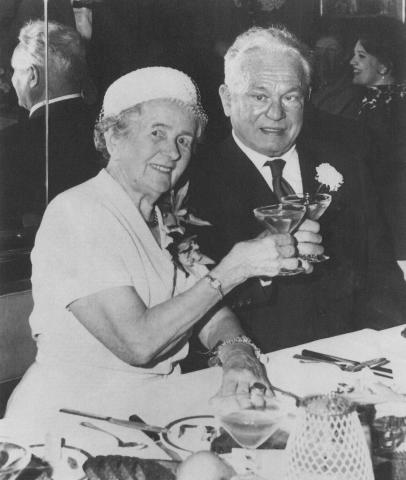
John Howard Steel brings the story of Joseph Pilates and his eponymous exercise regime to life from his unique perspective as a student, friend, and confidant in his new book: Caged Lion: Joseph Pilates and His Legacy (Last Leaf Press). This excerpt is printed with permission.
“Would you like to come back to our apartment sometime and have a beer with Joe?” [Clara] asked. “Joe would really enjoy that.” I said okay. We settled on the next night at seven thirty.
Going to Joe and Clara’s apartment was quite a change from my after-office routine in the saloon with my coworkers. There we’d complain about our clients, or the lawyer on the other side, or a judge, or our boss, or life in general. If I didn’t go back to the office or wasn’t meeting my wife or friends for dinner, I usually walked home, sometimes grabbing a hamburger on the way.
But I was in no hurry to get home because I wasn’t happy at home. Whether Joe or Clara knew about my home life, I had no idea, but I suspected Joe, with his ability to read muscles and movements, sensed tension in my body. He had never mentioned anything.
That meek, shy Clara had been delegated to make the invitation told me something about Joe. Right off I knew I was the subject of some discussion in the Pilates household. Most surprising, however, was the thought that this blustery, autocratic man, seemingly in total control of everything in his world, didn’t ask me himself. I presumed he was either quite shy or truly afraid of rejection. The alternative, that it was the European way to have the woman of the house do the inviting, never occurred to me. My curiosity was piqued by what seemed like urgency.
Joe and Clara lived next door to the gym; the proximity was no accident. Their life was the gym and they went between the two spaces like others might go between the kitchen and the living room. The building was nineteenth century, poorly maintained, and very worn. This was New York in the 1960s—prosperous, striving to be modern— and here were these elderly, far from modern people, living in the same apartment for almost forty years. Perhaps some found it charming, reminiscent of Europe.
I showed up at the appointed hour and was suddenly in the inner sanctum of the Pilates family. Clara, who was at the door with Joe when I entered, went through a curtained entry to my left, and I heard a refrigerator door open and close. She returned with two bottles of beer and handed them to Joe and me wordlessly. As much of a surprise as the gym was when I first saw it, the apartment was even more unexpected. The thing that hit me right off was how dark it was, almost like a movie theater. I saw lamps about, but they must have had five-watt refrigerator bulbs in them, just enough light to navigate by. The apartment was one large room divided by flimsy walls that went up about eight feet but didn’t reach the ceiling. In New York real estate ads, it would be described as a “large, comfortable studio”—a glamorizing NY stretch for these digs. It took me a minute or two for my eyes to adjust even from the dark hall. There in front of me was a wood table on solid wood legs, surrounded by, of all things, six of the exact same exercise devices—called “the Wunda Chair”—as in the gym.
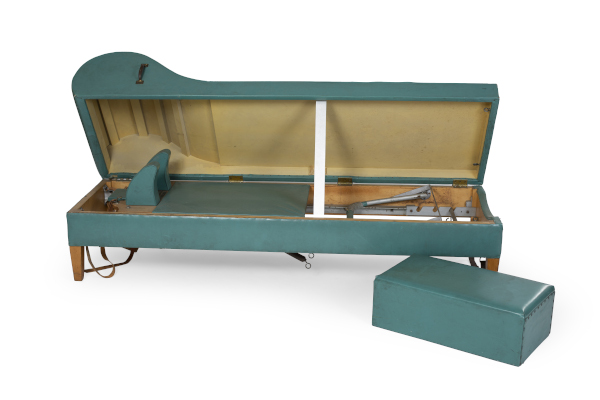
By flipping the chair on its back and making one other minor adjustment, the exercise apparatus nicely doubled as furniture—a dining chair. I would later learn that the transition from exercise apparatus to dining chair took about five seconds and required no tools.
The Wunda Chair is an excellent example of Joe’s design aesthetic, perhaps even his philosophy of life. He started, focused on the exercise potential of a piece of equipment, and then tried to make it into a piece of household furniture. This dual-purpose design— exercise equipment / household furniture—was applied to other equipment, which I will get to shortly. The Wunda Chairs are still built almost exactly as Joe made them, although while I see them in studios, I have never seen them in anyone’s dining room.
Below is the nicely upholstered chair made by Balanced Body. The image on the left is the social version, with cushions for the back and seat. The one on the right is the exercise version. It is the same chair flipped on its back (down to the left) with the seat and back cushions removed. Joe called it the Wunda Chair, and that it surely was.
Joe also made a Universal Reformer model with an upholstered top, turning the exercise equipment into a chaise with an intriguing ergonomic shape….
******
Joe and I sat down across from each other on the aforementioned Wunda Chairs, while Clara, in her nurse’s uniform, stood behind and to the side of Joe. They looked very formal and stiff, like a very old photograph where one person was seated, the other standing, and both holding their breath to avoid any motion. This tableau served to accentuate the huge cultural, never mind age, differences between the third generation Ivy League–educated guy in the suit and tie, and the immigrant Joe in his gym shorts and Clara in her nurse’s outfit. Joe thanked me for coming and hoped he had not inconvenienced me. I was uncomfortable in this very strange environment. He and Clara were more so. This was not the gym next door where Joe was in control, the cock of the walk, with the program laid out and fully understood. Conversation started very slowly.
“What do you do for a living?” Joe asked, after we both had a few swigs of beer.

I said, “I am a lawyer, frequently in court.” I expected more questions on that topic, such as, Did I like it? Or what kind of cases? But instead he went to more questions about my life. “Are you married?” “Do you have children?” “Where do you live?” followed in short order.
After I answered, he asked, digging deeper, “Why doesn’t your wife come to my gym? Your mother and father do.”
All I could say to that one was she wasn’t interested in doing exercises and didn’t get along with my mother or father. I left out that she didn’t get along with me either.
The conversation was slow, stiff, and very heavy….
******
The Joe in his apartment was different from the Joe in the gym. The clients who attended his gym knew him as a physical trainer. As such, he was something of a celebrity, like a symphony conductor on the podium. His presence alone directed the performance of the various activities on the floor. Like a conductor, he kept the studio hopping while working with a client. Whether as the “maestro” or your personal trainer, he remained distant. Nothing intimate or even friendly crossed that relationship divide.
Some people, dancers mostly, knew him as a savior—the person who kept them dancing, or stopped their back pain, or put a zip in their step, or some other career enhancing or enabling therapy. He helped professional golfers eliminate pain in their swing; he helped hairdressers and barbers work pain-free all day with their arms raised. He improved singers’ breath control. As the person who worked his obscure magic to solve a physical problem that ofttimes doctors, chiropractors, or massage therapists couldn’t, he was a medicine man. Someone who worked miracles.
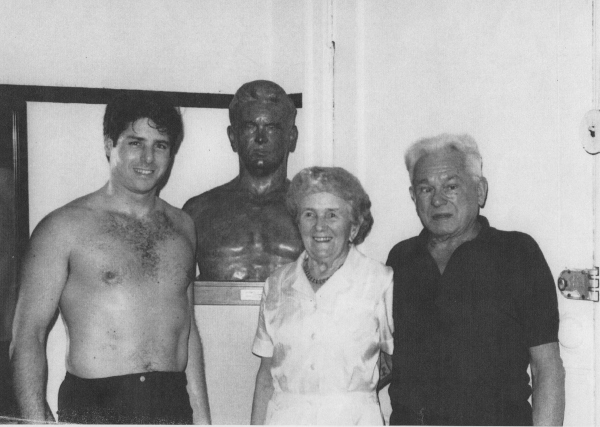
Joe had part-time assistants who seemed to appear from nowhere at busy times. They all knew the routines, were very helpful, but remained very much in his shadow. Even though Joe may have had different relationships with some of them or thought some of them better at following his program, or better with his clients, he treated them the same way he treated us, his clients. That is, he let them do what they believed necessary and never publicly corrected them. Perhaps he gave looks, or made small gestures, but I never saw him speak to his assistants. Managing the staff was, I suspect, Clara’s responsibility. His assistants seemed to know, as if by instinct, what was expected of them. One of the women assistants was reputed to be his mistress, but even the most perceptive prognosticator of an intimate relationship would not have been able to detect that.
To Clara, Joe was her devoted mate, her protector, and the sun rose and set on him. Clara assisted in and managed the gym, and she was treated there like all other assistants. She was Joe’s entire family. He had no contact with the family he left behind in Germany, little with his brother in Saint Louis. Who knows what the children and stepchild he left behind in Germany or his brother and sister-in-law thought of him? He appeared to have no interest in or connection to any members of the Pilates family, although his niece had worked as an assistant in the studio long before my time. His only other social connections that I knew about were as a member of a Masonic lodge, and his brethren there saw a side of him unknown to others. There he drank beer and spoke German. At the Lodge, he was just one of the immigrants getting on in New York.
On the few occasions when I was in a social situation with Joe, he was very quiet. He never mentioned any of his illustrious clients or spoke as a Contrology evangelist. Before my time, a group of his clients had tried to organize a foundation to perpetuate his work. To them, he had been the most difficult, frustrating person they had ever dealt with. One of them, a doctor, told me that the more they tried to help him organize his business and devise a succession strategy, the more he resisted them. He would sit quietly at meetings, then suddenly interrupt everything and shout, “You are trying to steal my work while I am still here!” Then he would storm out.
In the gym, Joe seemed to me partly like a college professor with a huge reputation who entered the lecture room, gave his lecture without interacting with the students, and left, usually to applause. The other part was a surgeon who visited the patient before an operation and tried to be friendly and personal but was emotionally detached . . . just there to fix a body. There was nothing personal or familiar in his relationships inside the gym. His clients and assistants were strictly about learning, doing, or teaching Contrology. He rarely knew his clients’ names, and if he did, he didn’t use them.
My social contact gave me a broader and different perspective. By coming to the apartment and sitting through what was always a stiff conversation with Joe and Clara, I saw them in an unusual light. My social relationship to them was peculiar and hard to put in any known category. I was certainly not a friend, nor was I their attorney. The relationship felt slightly familial, as if it was obligatory. How or why I felt obligated, I have never understood.
The closest I can come to defining the family-like relationship with Joe was grandfather–grandson. I did not see Joe as a grandfather, nor was I in search of one, as I had a perfectly good one. My guess is that Joe needed someone to perpetuate his legacy, and a grandson-like person might fill the bill. Or maybe he just wanted a grandson. Joe and Clara did not have children. Joe may have had real grandchildren back in Germany whom he may not have known about. He never mentioned the family left behind. Maybe as he got older, he felt bad about them. And there I was, old enough to no longer be a bother and young enough to be a grandson. I was conscripted.
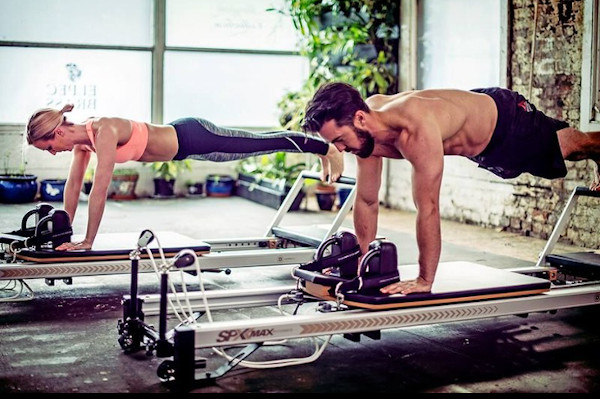
Joe was not particularly good at being a grandfather to someone who was essentially a stranger. Nor was I particularly prepared to be his grandchild. Joe was not like any member of my family. I had fond memories of my mother’s father, whom I knew only slightly but nevertheless remembered as loving and warm. He died when I was about ten. My father’s father died when my dad was thirteen, and my paternal grandmother married a worthy substitute long before I was born. My step-grandfather had no children, and that was a good thing because he didn’t like little kids. I spent a good part of my growing-up years living with my step-grandfather and my grandmother, whom I adored. When I got past the so-called difficult years and no longer needed to be played with or read to, my step-grandfather started to tolerate me, then he began to enjoy me. He taught me to ride a bicycle, use tools, and be independent. He took me to California every summer where he had business, and I trailed around after him all day. I sense he wanted to fill gaps in my parenting that he mistakenly thought my father neglected: teaching or lecturing on hard work, resilience, and perseverance. After becoming a lawyer, I was the only family member he trusted, other than my grandmother. My step-grandfather went to the horse racetrack nearly every afternoon, and he took me with him on occasion and tried to teach me how to handicap horses: a skill he was not particularly adept at despite years of avid interest and conscientious practice. I was terrible—you needed to be able to remember the names of horses, jockeys, trainers, and a whole bunch of statistics—not my strong suit.
Occasionally, Joe would ask me if I would like a Saturday morning session. I enjoyed those—the gym was empty, and he was completely focused on me. Afterwards Joe always wanted to take a walk. His favorite destination was the Central Park Zoo, a ten-minute trip. Clara would make some sandwiches and pack them in the cellophane bag from the loaf of bread, and we would head up Eighth Avenue into the park at 59th Street, then over to the zoo and a bench opposite the lion or tiger cages.
Joe was transfixed watching large caged cats. He noticed their every move and was particularly attentive to anything that resembled either exercise or stretching, which is about all they did. Every time an animal made a move that caught his attention, he would tap me on the leg and point it out. He would then tell me why the animal was doing what it was doing, and how he had incorporated that stretch or exercise into Contrology. Watching the tragedy of caged animals was unpleasant for me. Joe, on the other hand, loved to observe an animal’s behavior in confined space, and he compared every instinctive move made by the animal to a movement of Contrology. As I watched the animal, I recalled my first impression of Joe as a lion on its hind legs. Except here it was caged. The lion’s need to exercise and stretch was what Joe said we city dwellers needed for our survival. I looked across at Joe, and from the intensity on his face, I realized he was watching himself in that enclosure. He knew what it was like to be caged. We would sit there for about an hour and eat the sandwiches, and suddenly, without a word, Joe would get up and start back home.
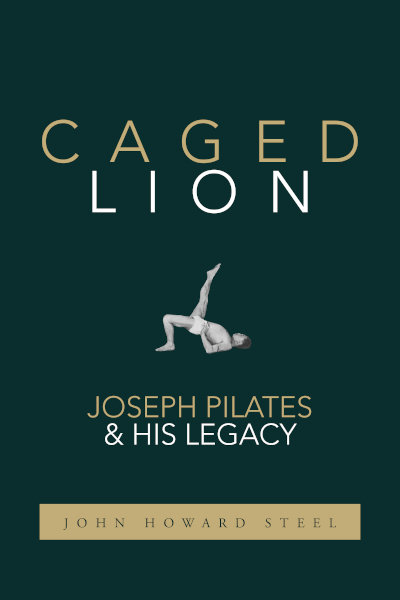
This is an excerpt from Caged Lion: Joseph Pilates and His Legacy by John Howard Steel (Last Leaf Press). Printed with permission.
Highbrow Magazine
Image Sources:
--Courtesy of the author
--Runway Pilates (Flickr, Creative Commons)































































































































































































































































































































